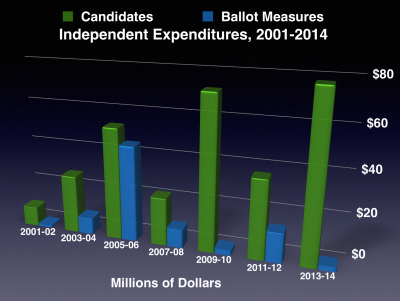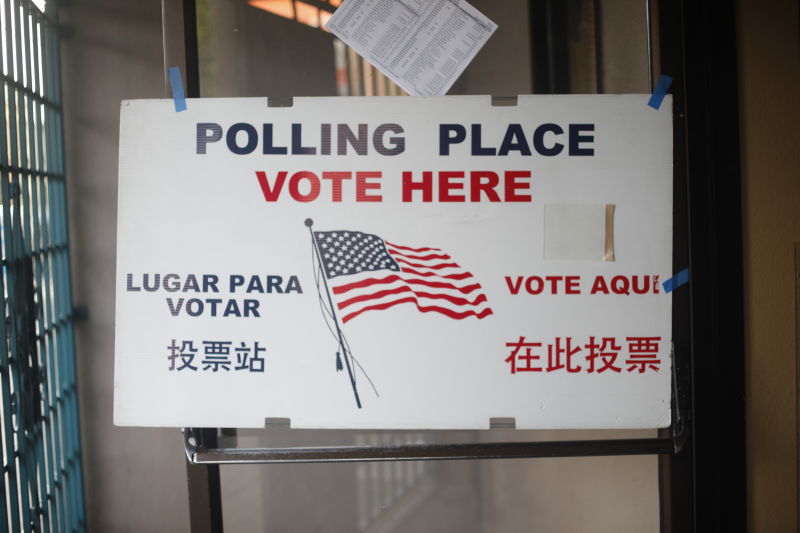The nonprofit group's new database relies on information about independent committees that has always been available to the public through the secretary of state, but then rearranges it in a way that allows simple searches, ranging from candidates and donors to even what the money was used for -- from advertising to campaign T-shirts.
The Boom In Independent Contributions
That first number in this story, the overall growth in spending on independent expenditures over the past few years, is one that merits a closer look.
Keep in mind that this explosion in spending on what politicos call "IEs" really dates back to the passage of Proposition 34, a 2000 ballot measure that created new limitations on contributions made directly to candidate-controlled campaigns. As a result, the big money simply shifted to political committees that can raise whatever money they desire -- as long as they don't coordinate with the candidate.
If that sounds remarkably like the world of "super PACs," the groups that have dominated the national political scene since a 2010 ruling by the U.S. Supreme Court, it is. In many ways, California's independent expenditure campaigns, and their largely unrestricted spending on regional and state candidate campaigns, were the real model for what happened across the nation.
MapLight's new independent expenditure tracking tool makes it easy to see just how fast this kind of spending came to dominate the state's political playing field.
For starters, just look at its influence on races for the California Legislature over the past seven election cycles.
In 2001-2002, about $9.3 million of independent expenditures went to help elect or defeat legislative candidates. By 2013-2014, the total had ballooned to $78.1 million.
As always, the context of which races were being fought is important, and in both legislative houses there have been several high-profile clashes sparked by either redistricting or the new top-two primary system. Not surprisingly, these races would have attracted more campaign cash than might have otherwise been spent.
 Even so, the data tell a story about the current state of California politics for one important reason: The money spent on independent campaigns seems to be in addition to the already well-funded world of candidate campaign committees.
Even so, the data tell a story about the current state of California politics for one important reason: The money spent on independent campaigns seems to be in addition to the already well-funded world of candidate campaign committees.
Just use a different new database built by MapLight, this one in coordination with Secretary of State Alex Padilla and unveiled in late summer, and you find that total contributions to committees controlled by legislative and statewide candidates have gone up steadily since 2001-2002. So it's not a case of money being moved from one place to another.
The 2013-14 election cycle saw a new high-water mark for money spent by independent committees on candidate races -- more than $78 million. The vast majority of that ($55 million) was spent on efforts to support a candidate, perhaps a reality check on the widely held belief that IE committees are mostly focused on ads or mailers that attack candidates.
Legislative races, at least in recent years, have tended to dominate the spending by independent committees. The 2010 gubernatorial race, where billionaire Meg Whitman lost to Gov. Jerry Brown, was the biggest exception; also notable was the $20.2 million spent in 2014 on the slugfest between Superintendent of Public Instruction Tom Torlakson and the man he defeated, schools advocate Marshall Tuck.
If nothing else, the new search engine should remind everyone that California campaigns rarely rely on the closely controlled dollars collected by the candidates themselves. The real action is in the committees that can raise, and spend, whatever they like in trying to sway the final tally on Election Night.

 Even so, the data tell a story about the current state of California politics for one important reason: The money spent on independent campaigns seems to be in addition to the already well-funded world of candidate campaign committees.
Even so, the data tell a story about the current state of California politics for one important reason: The money spent on independent campaigns seems to be in addition to the already well-funded world of candidate campaign committees.